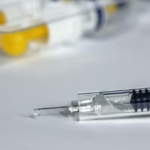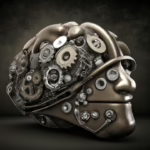The Silent Organ: Recognizing the Signs of Kidney Dysfunction
Introduction
Kidneys play a vital role in maintaining overall health and well-being, functioning silently yet efficiently to filter waste and excess substances from the blood. Despite their crucial role, kidney dysfunction often goes unnoticed until it has reached an advanced stage. This article will delve into the anatomy and functions of the kidneys, the various signs and symptoms of kidney dysfunction, the stages of chronic kidney disease (CKD), diagnostic methods, treatment options, and preventive measures.
The Anatomy and Functions of the Kidneys
The kidneys are two bean-shaped organs located on either side of the spine around the middle of your back. Each kidney contains approximately one million nephrons, which are tiny functional units responsible for filtering blood.
Essential Functions of the Kidneys
-
Filtration of Blood: The primary function of the kidneys is to filter waste products and excess substances from the blood, converting them into urine.
-
Regulation of Fluid Balance: Kidneys regulate the body’s fluid levels, ensuring that there is a proper balance of water and electrolytes, such as sodium and potassium.
-
Acid-Base Balance: The kidneys also help maintain the body’s pH balance by excreting hydrogen ions and reabsorbing bicarbonate from urine.
-
Hormone Production: The kidneys produce hormones that regulate blood pressure (renin) and stimulate the production of red blood cells (erythropoietin).
- Vitamin D Metabolism: They convert vitamin D into its active form, which is essential for calcium absorption and bone health.
Signs and Symptoms of Kidney Dysfunction
Kidney dysfunction is often referred to as a "silent" condition because it may not present noticeable symptoms in its early stages. However, as the condition progresses, several signs can emerge.
Early Warning Signs
-
Changes in Urination: Individuals may notice changes in the frequency of urination or experience difficulty urinating. Urination may become more or less frequent, and the amount of urine excreted at a time may fluctuate.
-
Swelling: Fluid retention can lead to swelling in the ankles, feet, or around the eyes due to the kidneys’ inability to remove excess fluid from the body.
-
Fatigue and Weakness: Anemia, often resulting from reduced erythropoietin production, can lead to fatigue and a general sense of malaise.
-
Persistent Itching: Accumulation of waste products in the blood can cause skin irritation and itching.
- Nausea and Vomiting: As toxins build up in the bloodstream, gastrointestinal symptoms such as nausea and vomiting may occur.
Advanced Symptoms
In more advanced stages of kidney dysfunction, symptoms may become more severe:
-
Metallic Taste in the Mouth: An accumulation of waste in the blood can alter taste sensations, leading to a metallic taste in the mouth.
-
Foul-Smelling Breath: Uremia (high urea levels) may result in a urine-like odor on the breath.
-
Chest Pain: Fluid build-up around the heart can cause chest pain and ultimately lead to complications such as pericarditis.
- High Blood Pressure: Impaired kidney function can contribute to hypertension, which may not respond well to medication if the underlying cause is not addressed.
Understanding Chronic Kidney Disease (CKD)
Chronic Kidney Disease refers to the gradual loss of kidney function over time. It is classified into five stages based on the Glomerular Filtration Rate (GFR):
-
Stage 1: Normal or high GFR (≥90 mL/min) with no symptoms; mild kidney damage detected.
-
Stage 2: Mild GFR (60-89 mL/min); kidney damage is present with mild symptoms.
-
Stage 3: Moderate GFR (30-59 mL/min); more noticeable symptoms may start appearing.
-
Stage 4: Severe GFR (15-29 mL/min); significant symptoms and complications begin to develop.
- Stage 5: End-Stage Renal Disease (ESRD), requiring dialysis or kidney transplantation; GFR <15 mL/min.
Diagnostic Methods
Recognizing kidney dysfunction early requires appropriate diagnostic measures. Some common methods include:
-
Blood Tests: Blood tests can check levels of creatinine and urea nitrogen, which are indicators of kidney function.
-
Urine Tests: Urinalysis can detect protein, blood, or other abnormalities that may suggest kidney problems.
-
Imaging Tests: Ultrasound and CT scans can provide a visual assessment of kidney structure and any potential obstructions.
- Kidney Biopsy: In some cases, a small sample of kidney tissue may be analyzed to determine the cause of kidney dysfunction.
Treatment Options
Treatment for kidney dysfunction typically aims to slow disease progression and manage symptoms:
-
Lifestyle Modifications: Dietary changes may include reducing sodium intake, limiting protein consumption, and avoiding excessive potassium and phosphorus.
-
Medications: Various medications can help control blood pressure, alleviate pain, and manage anemia associated with kidney disease.
-
Dialysis: For those with advanced kidney failure, dialysis may be necessary to filter waste from the blood artificially.
- Kidney Transplant: A transplant may be considered for patients with end-stage kidney failure, offering the potential for a cure.
Preventive Measures
Preventing kidney dysfunction involves adopting a healthy lifestyle and monitoring risk factors such as hypertension and diabetes. Some effective preventive measures include:
-
Regular Check-ups: Routine blood and urine tests can help detect early signs of kidney dysfunction.
-
Healthy Diet: A diet rich in fruits, vegetables, and whole grains while low in processed foods can support kidney health.
-
Hydration: Adequate fluid intake is essential, aiding kidney function and waste elimination.
-
Exercise: Regular physical activity promotes cardiovascular health, indirectly benefiting the kidneys.
- Managing Chronic Conditions: Proper management of diabetes and hypertension can significantly reduce the risk of developing CKD.
Conclusion
Kidney dysfunction is often subtle in its early stages, making it essential for individuals to be vigilant and aware of any signs that may indicate potential problems. Understanding the role of kidneys and recognizing symptoms can lead to early diagnosis and prompter care. Regular check-ups, lifestyle modifications, and proactive approaches are critical for maintaining kidney health and preventing dysfunction.
References
- National Kidney Foundation. (2021). “Understanding Kidney Disease.” https://www.kidney.org/
- Centers for Disease Control and Prevention. (2020). “Chronic Kidney Disease.” https://www.cdc.gov/
- Levey, A. S., et al. (2009). "A new equation to estimate glomerular filtration rate." Annals of Internal Medicine, 150(9), 604-612.
- KDOQI. (2002). "KDOQI Clinical Practice Guidelines for Nutrition in Chronic Kidney Disease." American Journal of Kidney Diseases, 39(2), S1-S140.
- National Institute of Diabetes and Digestive and Kidney Diseases. (2016). “Kidney Disease Statistics.” https://www.niddk.nih.gov/
This article aims to raise awareness about the importance of kidney health and the subtle signs of dysfunction that should not be overlooked. It is critical to consult healthcare professionals if any symptoms arise, as timely intervention can make a significant difference in outcomes.


























Add Comment